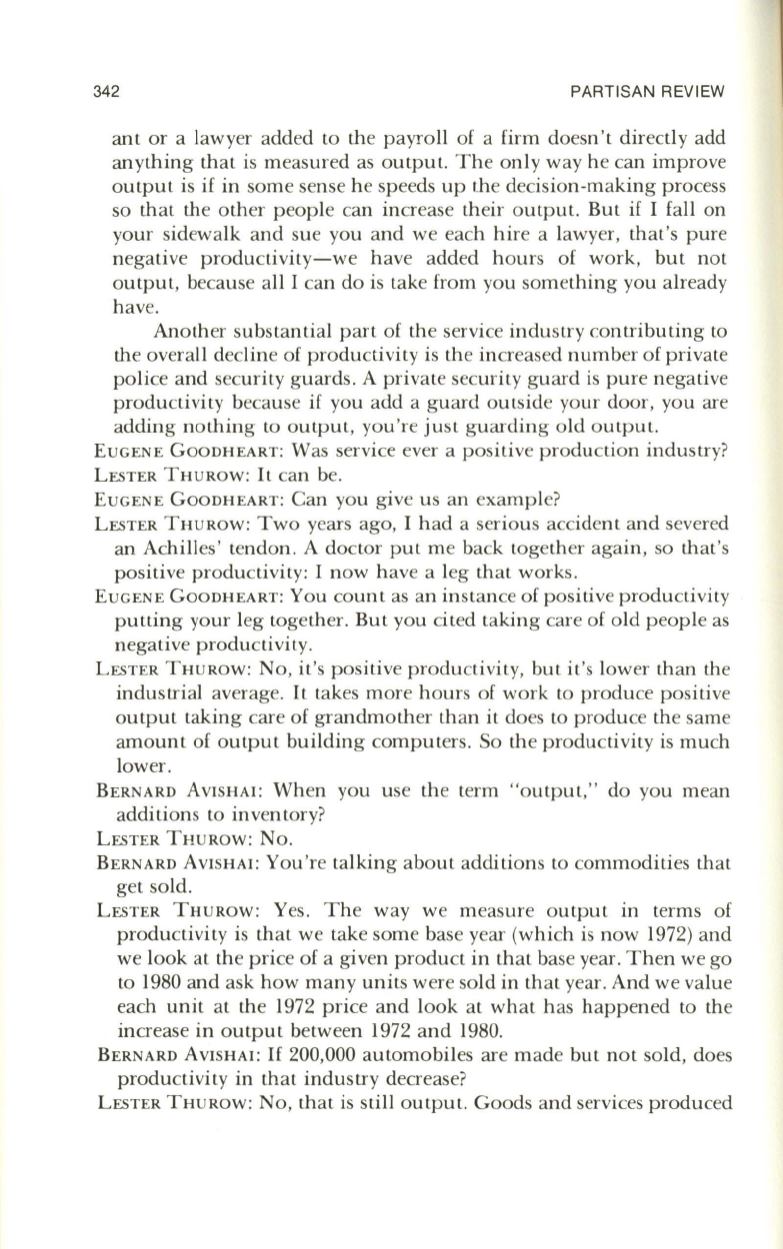
342
PARTISAN REVIEW
ant or a lawyer added to the payroll of a firm doesn 't directly add
anything that is measured as output. The only way he can improve
output is if in some sense he speeds up t.he decision-making process
so that the other people can increase their output. But if
I
fall on
your sidewalk and sue you and we each hire a lawyer, that's pure
negative productivity-we have added hours of work, but not
output, because all
I
can do is take from you something you already
have.
Another substantial part of the service industry contributing
to
the overall decline of productivity is the increased number of private
police and security guards. A private security guard is pure negative
productivity because if you add a guard outside your door, you are
adding nothing to output, you're just guarding old output.
EUGENE GOODHEART: Was service ever a positive production industry?
LESTER THUROW:
It
can be.
EUGENE GOODHEART: Can you give us an example?
LESTER THUROW: Two years ago,
I
had a serious accident and severed
an Achilles' tendon. A doctor put me back together again, so that 's
positive productivity:
I
now have a leg that works.
EUGENE GOODHEART: You count as an instance of positive productivity
putting your leg together. But you cited taking care of old people as
negative productivity.
LESTER THUROW: No, it's positive productivity, but it's lower than the
industrial average.
It
takes more hours of work to produce positive
output taking care of grandmother than it does to produce the same
amount of output building computers. So the productivity is much
lower.
BERNARD AVISHAI: When you use the term "output," do you mean
additions to inventory?
LESTER THUROW: No.
BERNARD AVISHAI: You're talking about additions to commodities that
get sold.
LESTER THUROW: Yes. The way we measure output in terms of
productivity is that we take some base year (which is now 1972) and
we look at the price of a given product in that base year. Then we go
to 1980 and ask how many units were sold in that year. And we value
each unit at the 1972 price and look at what has happened to the
increase in output between 1972 and 1980.
BERNARD AVISHAI:
If
200,000 automobiles are made but not sold, does
productivity in that industry decrease?
LESTER THUROW: No, that is still output. Goods and services produced


